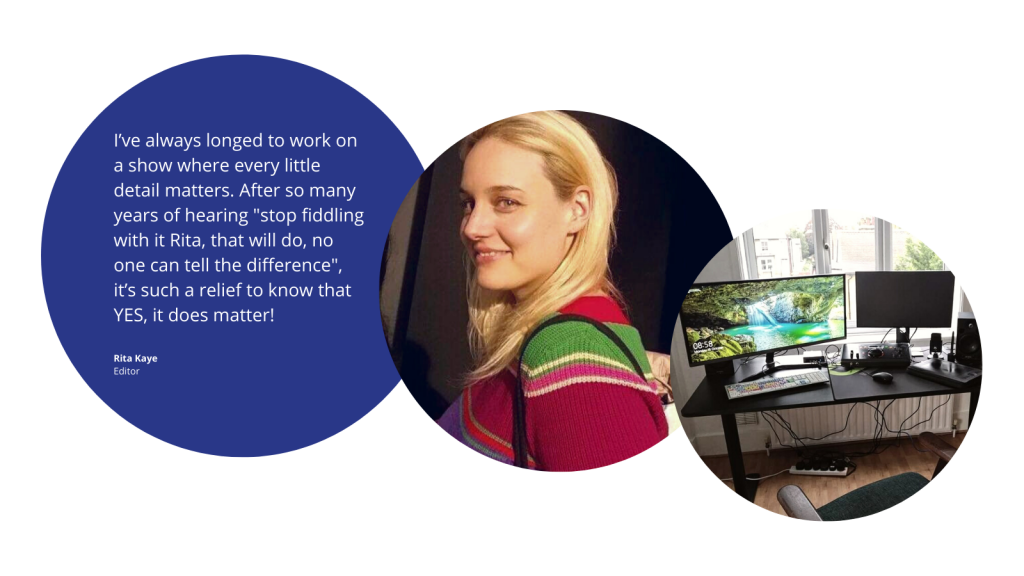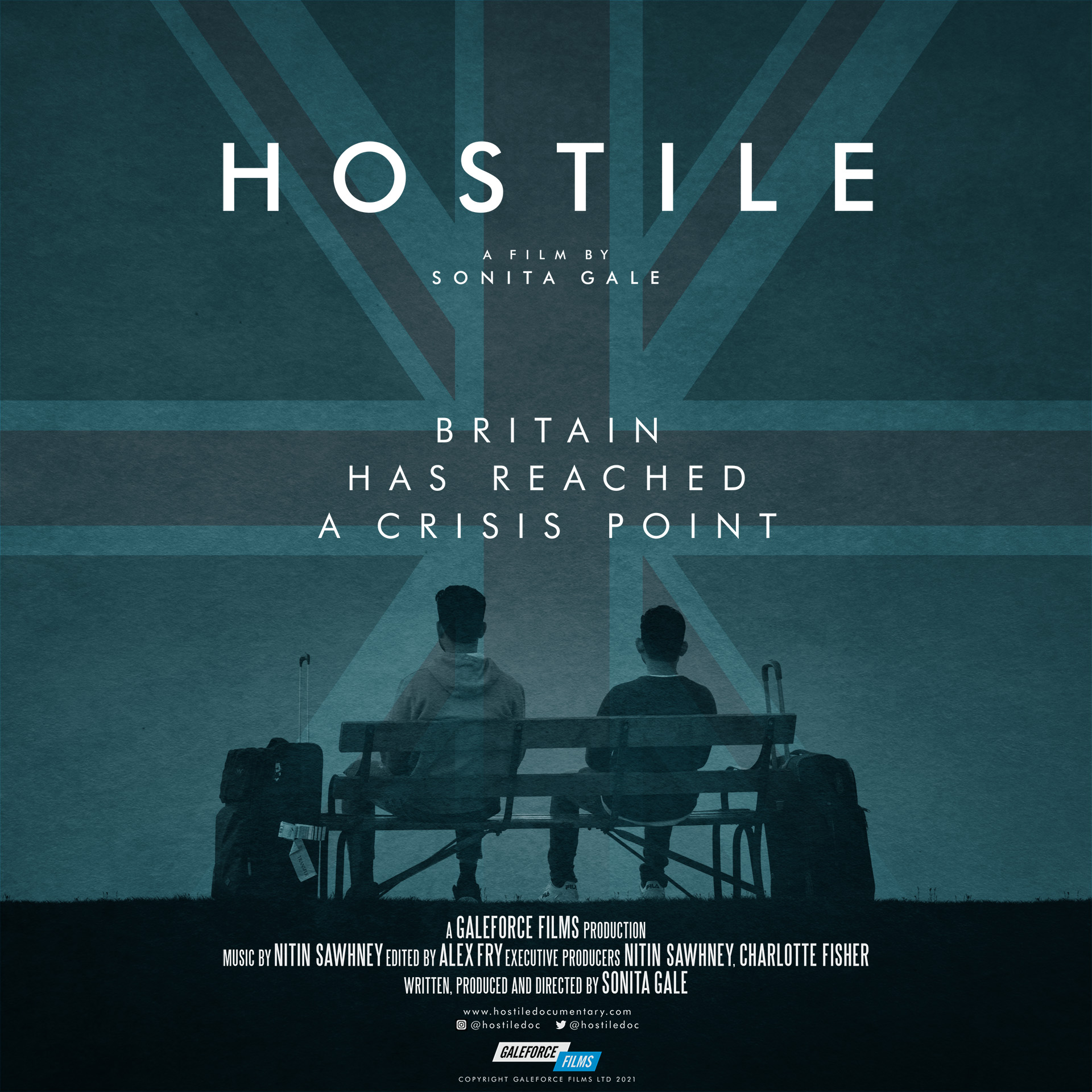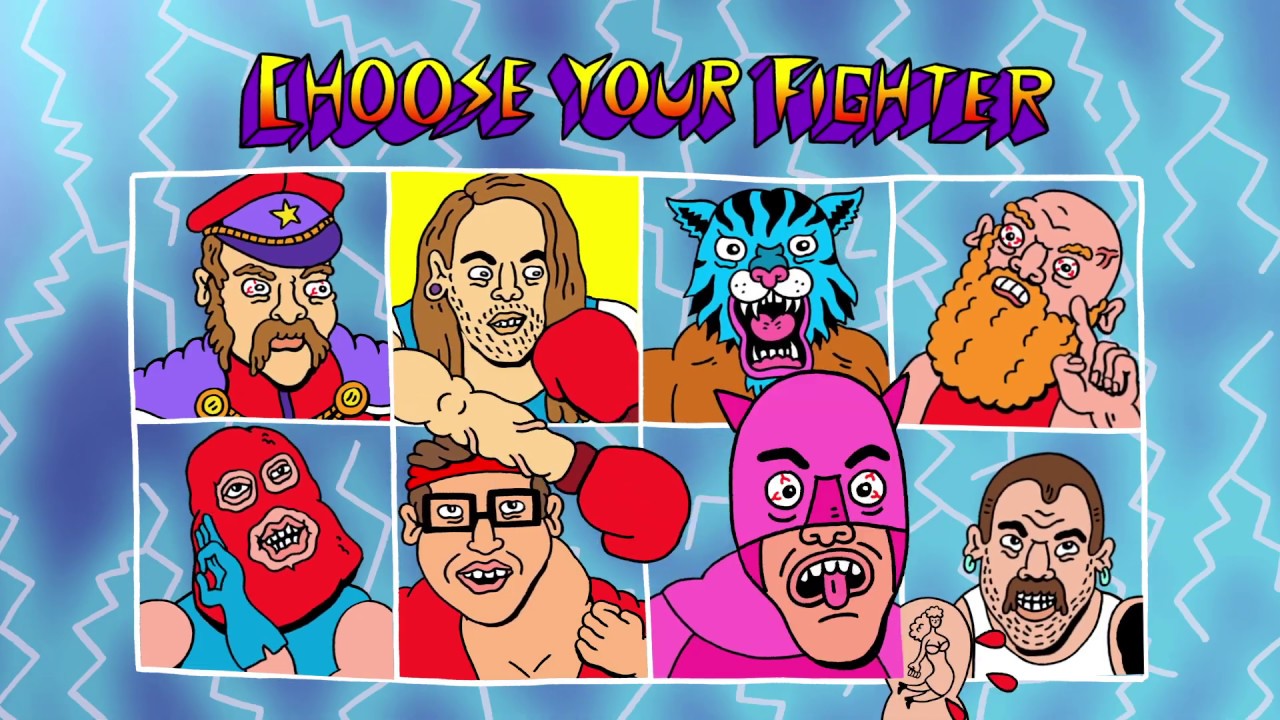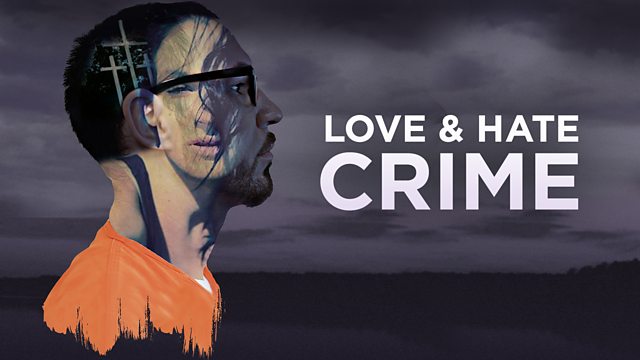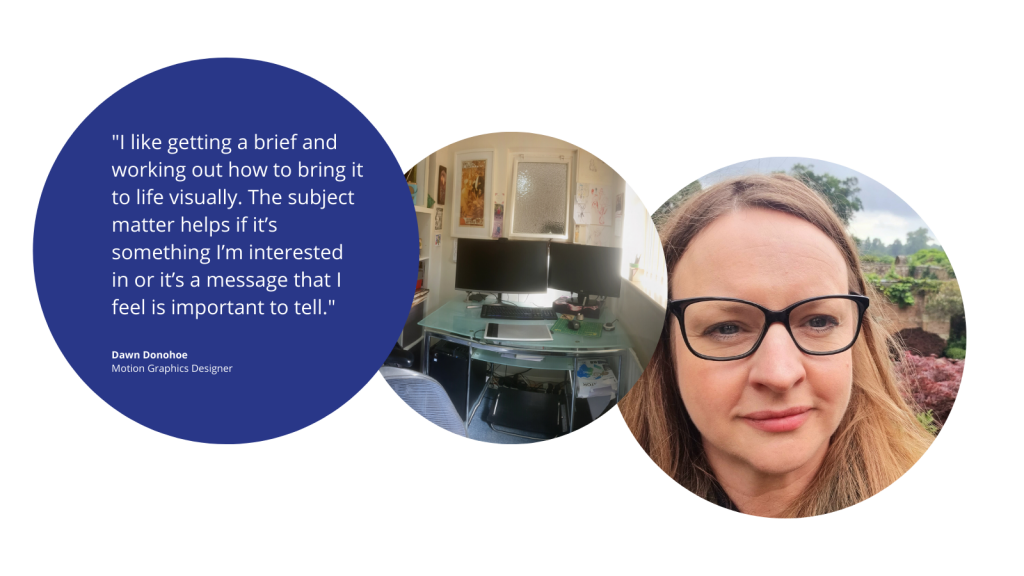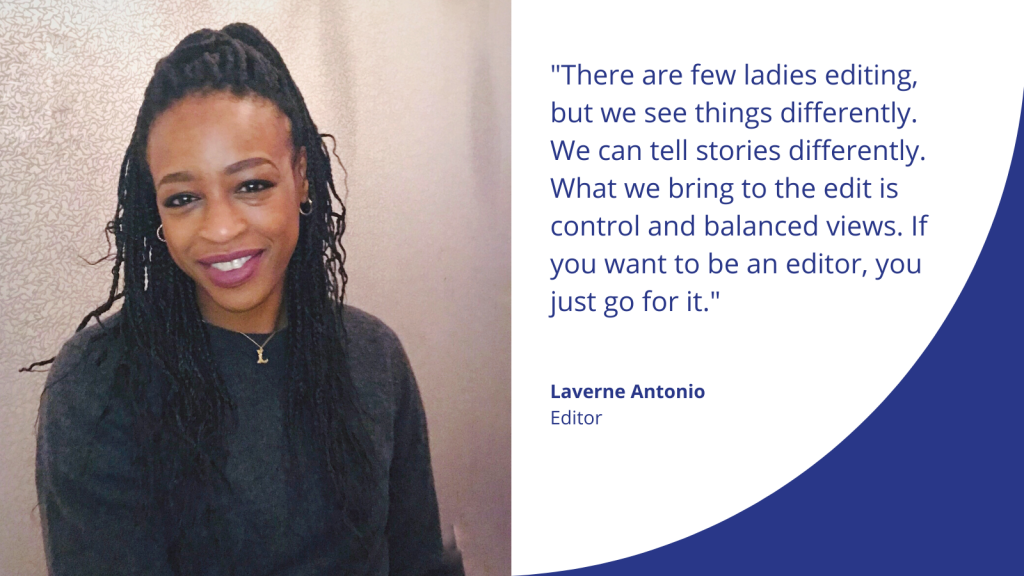Senior Motion Graphics Designer Dawn Donohoe has 20+ years of experience across a wide variety of projects and industries – including animations for film trailers, title sequences, news and sports graphics and feature-length VFX. We discussed her career journey and breaking the bias.
Did you always want to pursue a career in post-production?
I’ve always liked art, so I always knew I was going to do something creative, but not necessarily what. I wouldn’t pigeonhole myself to post-production either. I’ve been freelancing for so long I’ve done a bit of everything. I have done some post-production, but also TV, games, commercials, infographics, corporates, news and sports. There’s not really one area.
Where did you train?
I did a foundation course in art and design after school. Then I went to The University of Humberside and Lincolnshire. I thought I’d probably end up doing photography or illustration, but in your first year you end up doing five different disciplines. I tried all five, I liked film and Illustration but I loved animation. I haven’t looked back since then. That’s where it all started.
How did you get your break in the industry?
I was very lucky in my third year that my tutor, Gillian Lacey, liked me enough to give me a job as a runner when she made her own film about claustrophobia called, Gotta Get Out with Alison Steadman. Not only did it help me to get something on my CV, but I was also able to see some stop motion and green screen in a real film environment. They even gave me a small part as an air hostess. After university you are obviously in that horrible catch-22 situation where you can’t get a job without any experience, and you can’t get experience unless someone gives you a job. I worked out that the best way to get experience was to offer my services for free. So I did and got a break at L!ve TV. They didn’t even pay expenses! Kelvin Mackenzie and Nick Ferrari ran it. Imagine a tabloid newspaper making a TV channel. They got the first interview with The Spice Girls, so they did get some things right. However, it was quite notorious at the time but not necessarily for the right reasons. It is where I taught myself digital 2D and 3D animation. I did a drawn animated title sequence for Stone age Topless Darts. My first 3D title sequence for Britain’s Bounciest Weather with Rusty Goffe. He is an actor, 4 foot 2 inches tall and he would bounce higher and higher on a trampoline, calling out the weather forecast until he reached the top of Scotland. All programming you shouldn’t be able to air now. I met so many people and I’m still in contact with a few of them. It was many peoples’ first job out of university and we were all paid pittance. There was a real sense of camaraderie. The Mirror Group was bought, which L!ve TV was part of, but the buyers didn’t want the TV channel, so everybody just went off into the industry. That’s 200 contacts all at once just going off. I’ve come across lots of ex L!ve TV people during my career and it’s always lovely to bump into them.
You’ve worked across the board since then…
I did quite a lot of work at Supermassive Games on Dr Who and Shattered State as well as Electronic Arts where I worked on the Harry Potter franchise and various Hasbro titles. For Battlefield 2: Modern Combat I did the cut scenes, the menus, the loading screens, etc. Everything that was on the motion graphics side of it. Obviously, there was a massive talented team making the game. I think of it like, the game is the present and the cut scenes, loading screens and menus are the wrapping paper. You don’t change anything to do with the game, you just make it look prettier and simpler to unwrap. My agency work has covered a lot of compositing and visual effects. I’ve also worked for most of the film marketing companies in Soho, such as Picture Production Company which is a new client for Blueberry. That was the last place I worked before I went freelance and it’s where I met my husband!
Are there any women in the industry who have inspired you?
Whilst at Uni I went to the 1994 Cardiff animation festival. Britannia by Joanna Quinn is the film that inspired me. It cemented my desire to want to animate, that not everything needed to be pretty and pristine, and the entire festival showed me there was so much more to animation than the dominant Disney mainstream. I’ve just rewatched the film and it’s still very relevant today! I do get inspired by people, but it’s more about the work that is created and often it is a team. Still, it can be very male dominated.
Do you think the industry has improved since you first started out in terms of diversity?
Well, yes. If you bear in mind my first job was probably the worst example and the opposite of what you should be doing. I think it would be so politically incorrect on so many levels now. When I first worked at PPC they had no HR department. So, it’s much better than that. Over time less of my freelance jobs are white male-dominated but there’s still unconscious bias around.
Do you prefer working on projects with more creative freedom?
If I look at the last year, I’ve done projects where I’ve had complete creative control. Someone has sent a video script and I’ve made the animation from start to finish; concept, storyboarding, animating the works. I had another job that had a team of illustrators, and they handed over storyboards and supplied some artwork. So, I was responsible for the animation and any additional art it needed. I worked on a channel 4 film series called The Money Maker. It was originally an American show called The Profit. I had to make a new logo for the UK when they changed the name to The Money Maker. That started as a job that was just going to be an infographic within the programme but then I was asked to design the show’s logo. Sometimes it changes when you gain trust. I prefer the jobs where you are just given a script and you’ve got nothing other than the script to work with. Then I’ve got my own contacts, so I might use one of those to help me with the audio. I might get the client to pay them, or I might take it out of my budget. Those tend to be the ones that don’t come through agencies. They tend to be my own clients. The agency work is more doing a set job, for a set rate on a set date.
Are there any types of projects you would love to work on?
I love doing title sequences. I do a lot of infographics and explainer videos. That’s sort of my bread and butter really. I like getting a brief and working out how to bring it to life visually. The subject matter helps if it’s something I’m interested in or it’s a message that I feel is important to tell.
How has lockdown been for you?
The first bit of Covid was awful because I was working at a film marketing company and they just said, ‘sorry that work we’ve booked you for next week isn’t happening.’ They should have paid me really as I was fully confirmed. Work fell off a cliff, but something would have had to give as home-schooling was thrown into the mix. Everyone soon began to keep calm and carry on; animation began to replace the filming that wasn’t able to go ahead. The pandemic made everybody evaluate things. At the end of 2020, I applied to do a teaching role. I took it on as it was specifically motion graphics and animation, nothing else. It was only 2 days a week teaching and I thought I could take the time and financial hit for those 2 days. However, it stopped me from being able to fully commit to week long bookings, and so it frequently meant I missed out on work for the other 3 days. As I hadn’t taught before, and I didn’t have any training for lesson planning. I tended to do more work than experienced teachers would probably need to. I didn’t want to get things wrong in front of a bunch of 16-19 year olds, they’d never let you get away with it! I’m not doing the teaching anymore, it was a fixed term contract. I’ve learnt you’ve got to be all in, or all out really. It’s too difficult to try and do both. I did really enjoy it and I might like to go back to it if I could manage the work life balance better.
What advice do you have for other women pursuing a career in the industry?
What was really encouraging when I was teaching was there were a lot more girls there. If you’re freelance, then don’t worry as much about the quiet periods, enjoy the time off or you might never get a break. Always be genuinely nice to everybody. No one is ever too big to make a cup of tea. That tends to be where you get all the gossip. Quite a lot of people these days, especially millennials, just sit there with headphones on. They might as well work remotely. The point of working with others is about developing ideas and skills and bouncing and learning off each other. Just be sociable and friendly, manners will get you a long way. You can always learn software and watch tutorials etc. but, you can’t teach what comes naturally so just be yourself.
